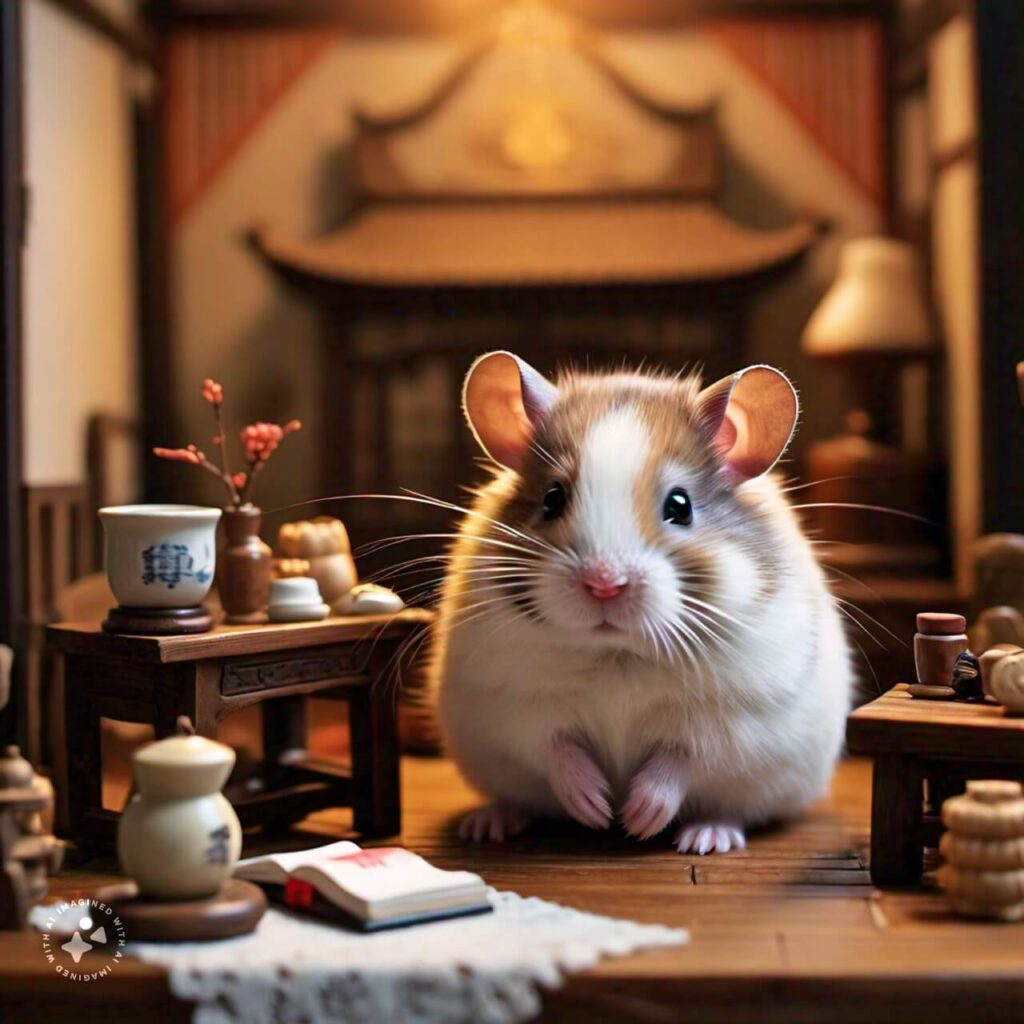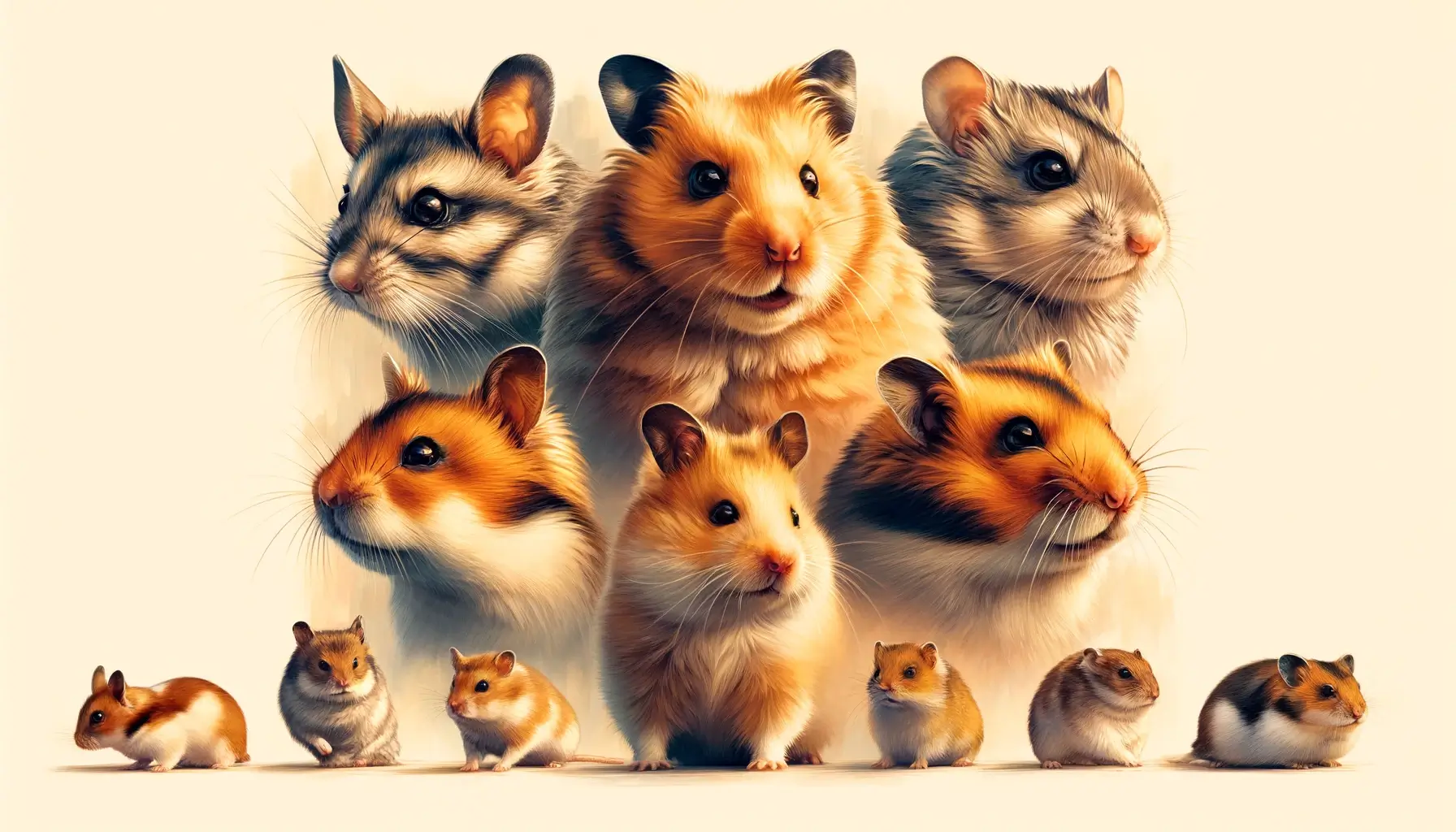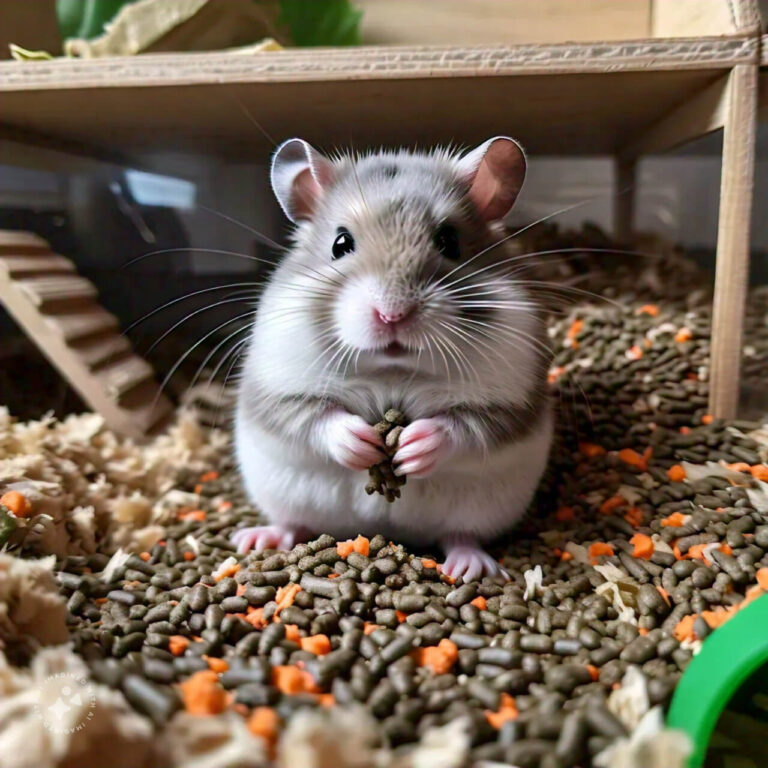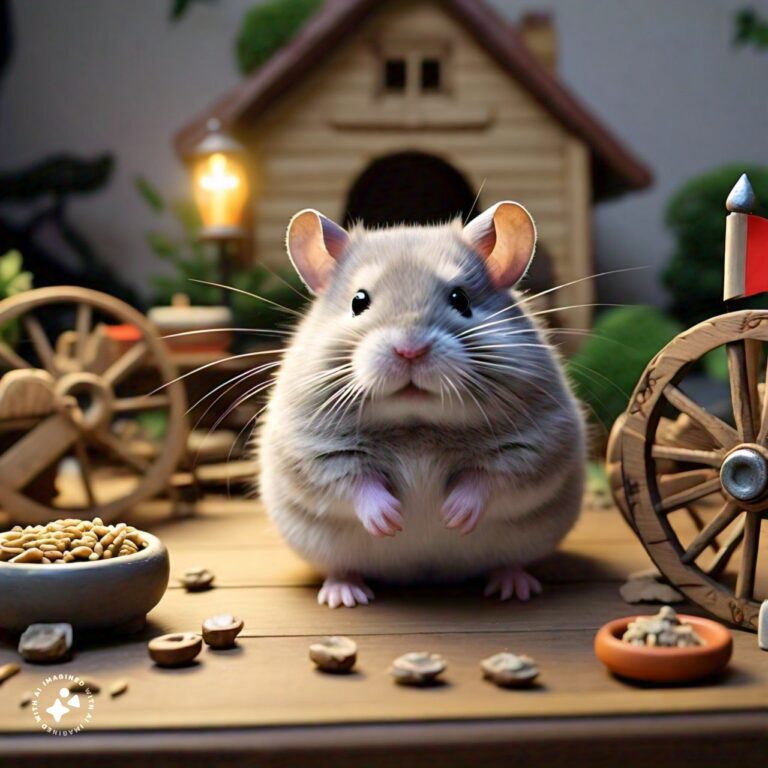Complete Knowledge about Chinese Hamster – hamsters.pk
Introduction to the Chinese Hamster: A Pocket-Sized Pet
The Chinese hamster is a charming and diminutive creature that has captured the hearts of pet enthusiasts around the world. Known for their docile temperament and manageable care requirements, these small rodents make ideal pets for individuals and families alike. This article delves into the unique characteristics and needs of the Chinese hamster, providing a comprehensive guide for potential and current owners.
Physical Characteristics
The Chinese hamster, often referred to as Cricetulus griseus in scientific communities, stands out due to its petite size and distinctive appearance. Typically measuring between 7.5 to 9 centimeters in length, they weigh just around 20 to 30 grams. Unlike their Syrian and Dwarf counterparts, Chinese hamsters have a longer body, giving them a more mouse-like appearance. Their fur color varies from grayish brown to dark brown, with a prominent black stripe running down their spine and a lighter belly.
Temperament and Behavior
One of the most appealing traits of the Chinese hamster is its gentle temperament. These hamsters are known for being less aggressive than other hamster species, making them excellent pets for children under supervision. They are nocturnal, meaning most of their activities occur during the night. During the day, they prefer to burrow and hide, which mimics their natural behavior in the wild.
Housing Needs
Proper housing is crucial for the health and well-being of a Chinese hamster. They thrive in environments that provide ample space for exercise and exploration. A secure, well-ventilated cage with a solid floor, equipped with a nesting area, is ideal. It is important to avoid wire-bottom cages as they can harm their small feet. Adding chew toys and a wheel for running can help keep them active and prevent boredom.
Diet and Nutrition
Feeding your Chinese hamster a balanced diet is key to maintaining their health. A high-quality commercial hamster mix, which typically contains seeds, grains, pellets, and dried vegetables, is a good foundation. Supplementing this with small amounts of fresh fruits and vegetables can provide necessary nutrients and add variety to their diet. It’s crucial to provide fresh water daily through a water bottle attached to their cage.
Health Considerations
Chinese hamsters are generally hardy animals but are susceptible to certain health issues such as diabetes and respiratory infections. Regular vet check-ups can help prevent and manage these conditions. Paying attention to any changes in their behavior or appearance is important as it could indicate health problems.
Conclusion
The Chinese hamster is a delightful companion that offers much joy and companionship to its owners. Their small size and modest care requirements make them particularly suited for individuals with limited space or those new to pet ownership. By providing proper care, a suitable environment, and regular health checks, you can ensure your Chinese hamster leads a healthy, happy life.
Habitat and Behavior: Understanding the Natural Environment of Chinese Hamsters

Introduction to the Chinese Hamster’s Natural Habitat
The Chinese hamster (Cricetulus griseus), though less common as a pet than its Syrian or Dwarf counterparts, offers fascinating insights into the adaptability and survival of small rodents. Originating from the deserts of northern China and Mongolia, these tiny creatures have evolved to thrive in sparse, arid environments. This section delves into the unique characteristics of their natural habitat and how these influence their behaviors and physical adaptations.
Adaptations to a Harsh Environment
The natural habitat of the Chinese hamster is characterized by extreme temperatures and limited water sources. To survive, these hamsters have developed several key adaptations. Their fur, a mix of dark and light brown with a prominent black dorsal stripe, provides camouflage against predators in the rocky desert landscapes. They are primarily nocturnal, which helps them avoid the daytime heat and conserve moisture. Understanding these adaptations is crucial for providing proper care in a domestic setting.
Social Behavior and Territoriality
In the wild, Chinese hamsters are largely solitary creatures. They exhibit territorial behaviors, especially males, which can extend to their interactions in captivity. During the breeding season, however, females may tolerate males, and the animals communicate through a series of high-pitched squeaks and chirps. This section explores their social interactions and how these can affect their care in home environments.
Foraging and Diet in the Wild
Chinese hamsters are omnivorous, with a diet in the wild that includes seeds, grains, insects, and even small vertebrates. Their ability to forage for a variety of food sources is vital for survival in an environment where resources are not always plentiful. This varied diet is also important to replicate in captivity to maintain their health and well-being.
Conclusion: Implications for Pet Owners
Understanding the natural habitat and behavior of Chinese hamsters is essential for anyone considering these unique creatures as pets. By mimicking their natural environment and diet as closely as possible, and respecting their need for space and solitary behavior, pet owners can ensure a healthy and stress-free life for their Chinese hamsters. This knowledge not only enhances the care provided but also enriches the bonding experience between the pet and its owner.
Care Guidelines for Chinese Hamsters: Diet, Housing, and Health
Chinese hamsters, often celebrated for their docile temperament and minimal space requirements, make ideal pets for both beginners and experienced pet owners alike. However, proper care is essential to ensure these small creatures live a healthy and happy life. This guide covers everything you need to know about the diet, housing, and health care of Chinese hamsters.
Dietary Needs of Chinese Hamsters
Chinese hamsters thrive on a diet that mimics their natural intake in the wild. The foundation of their diet should be a high-quality commercial hamster food, which typically contains a mix of seeds, grains, and pellets. It is crucial to ensure that the food is specifically formulated for hamsters to prevent nutritional imbalances.
Supplementing with Fresh Foods
In addition to commercial food, Chinese hamsters benefit greatly from the inclusion of fresh fruits and vegetables in their diet. Suitable options include carrots, spinach, apples, and cucumbers. Remember to introduce these foods gradually and in small quantities to avoid digestive upset. Also, it’s important to remove any uneaten fresh food from the cage to prevent spoilage.
Avoiding Harmful Foods
While Chinese hamsters can eat a variety of foods, some common human foods can be dangerous to them. Foods to avoid include onions, garlic, chocolate, and any sugary or high-fat treats. Always consult with a vet or a reliable care guide before introducing new foods to your hamster’s diet.
Housing Your Chinese Hamster
The habitat you create for your Chinese hamster plays a critical role in its overall well-being. A suitable cage should provide ample space for movement, as well as areas for burrowing and hiding. Aquariums or wire cages with a solid base are good options, but ensure the spacing between wires is narrow enough to prevent escape.
Creating a Stimulating Environment
To keep your Chinese hamster engaged and active, include various toys and accessories in their cage, such as tunnels, wheels, and chew toys. These not only help in maintaining physical health but also prevent boredom.
Maintaining Cleanliness
Regular cleaning of the cage is essential to prevent disease and maintain a healthy environment. Replace bedding at least once a week and clean the food and water containers daily.
Health Care for Chinese Hamsters
Regular health checks are vital to catch any signs of illness early. Some common health issues in Chinese hamsters include respiratory infections, diabetes, and dental problems. Watch for symptoms such as lethargy, sneezing, wetness around the chin or tail, and changes in eating or drinking habits.
Preventive Measures
Preventive care, such as maintaining a clean cage, providing a balanced diet, and regular interaction, can go a long way in preventing health issues. Additionally, a yearly check-up with a veterinarian experienced with small rodents can help ensure your hamster’s health.
By adhering to these care guidelines, your Chinese hamster can lead a long, healthy, and joyful life. Remember, the key to effective pet care is not just providing for their basic needs but also understanding and respecting their natural behaviors and preferences.
Breeding Chinese Hamsters: Best Practices and Genetic Considerations
Breeding Chinese hamsters, known scientifically as Cricetulus griseus, involves more than just placing two animals together; it requires careful planning and understanding of genetics to ensure healthy offspring and the maintenance of species diversity. This article explores the essential practices and genetic considerations any breeder should know.
Understanding the Basics of Chinese Hamster Breeding
Before diving into breeding, it’s crucial to understand the specific needs of Chinese hamsters. These small rodents are different from their Syrian counterparts and require unique care. They mature sexually at a relatively young age, generally around 6 to 8 weeks, and breeders need to be cautious about their breeding age and conditions to avoid health complications.
Genetic Considerations in Breeding
Genetics play a significant role in breeding healthy Chinese hamsters. Inbreeding, a common issue in small, closed populations, can lead to genetic disorders and reduced genetic diversity. Responsible breeders should aim to diversify genetic lines by introducing unrelated hamsters into the breeding pool. Genetic testing, while more accessible in other pet species, is challenging but growing in feasibility for small animals like hamsters.
Best Practices for Breeding Environments

The environment in which Chinese hamsters are bred significantly impacts their health and breeding success. A stress-free environment with adequate space, nesting materials, and a proper diet is essential. Temperature and lighting should mimic natural conditions to encourage natural breeding behaviors. Additionally, monitoring the female’s cycle and providing a secluded area for birthing can help ensure the safety and health of both the mother and her pups.
Ethical Considerations in Breeding
Ethics should never be overlooked when breeding any animal. Prospective breeders should consider whether they have the resources to care for all potential offspring. Furthermore, there should be a clear plan for placing hamsters in responsible homes. Overbreeding can lead to surplus animals without proper care, so it’s important to breed responsibly and ethically.
Breeding Chinese hamsters can be a rewarding experience if done with careful attention to genetic health, environmental conditions, and ethical practices. By adhering to these best practices and considerations, breeders can contribute positively to the species and enjoy the fascinating process of raising these unique animals.











